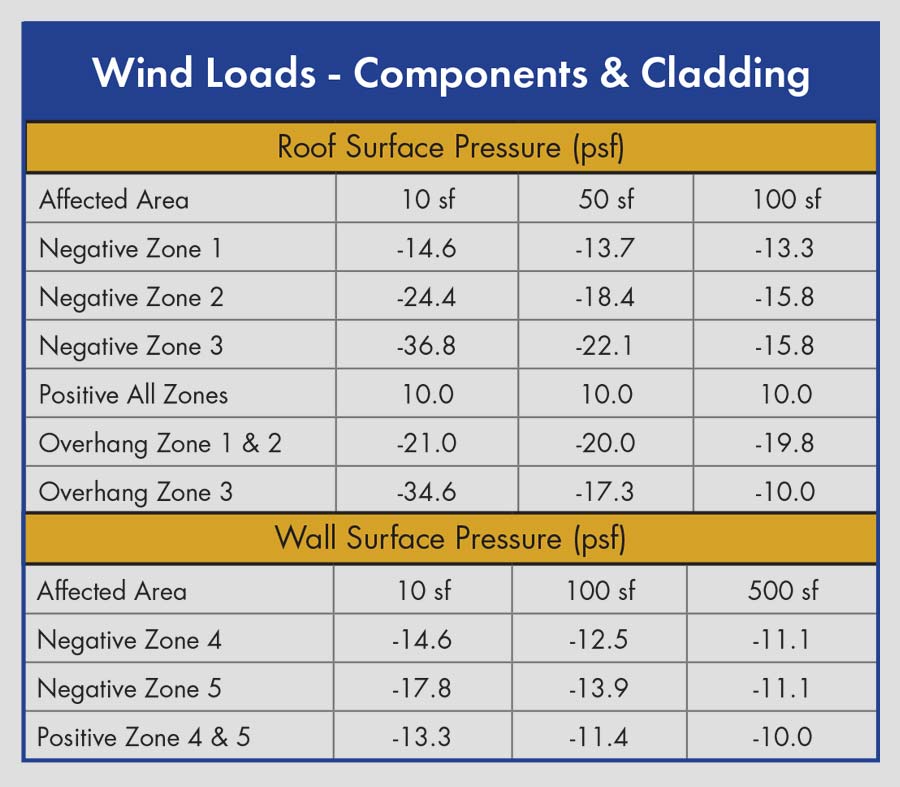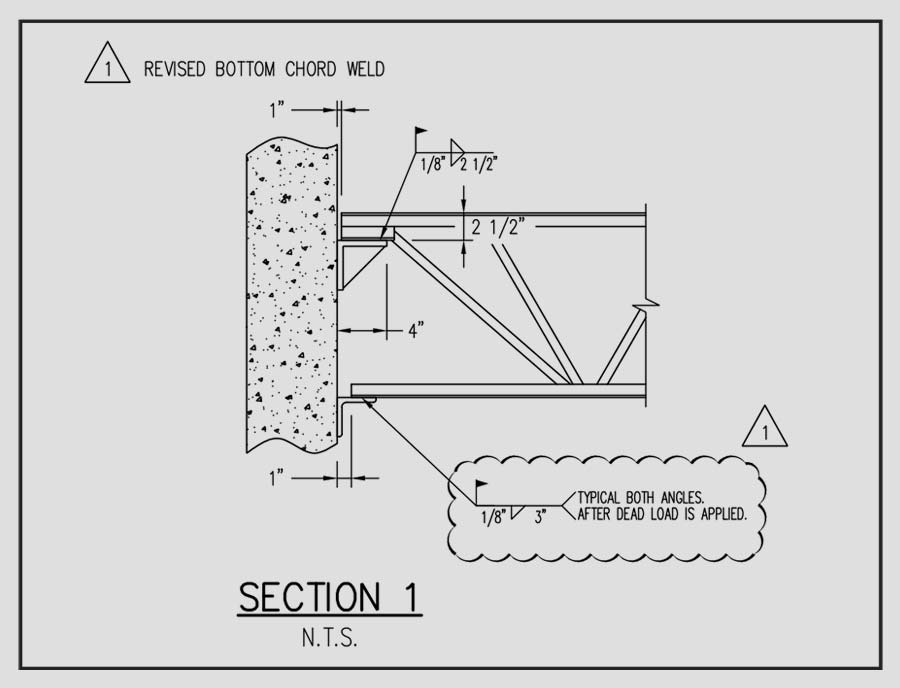
Construction projects big and small have phases. What happens during the early phases can dictate how smoothly the project will go and how much it will cost in the end. Consulting early on with your steel joist and steel deck supplier can help prevent specification mistakes, delays and cost overruns. Joe Penepent, New Millennium Building Systems sales engineer, shares the five most common specification mistakes made during the design phase of construction projects.
Sometimes contract drawings will not adequately specify net uplift wind loadings on a roof. For example, the contract drawings may only indicate the components and cladding for a 10-square-feet area chart. This information is inadequate to calculate the component and cladding net uplift value for the joists, which are typically based on a 100-square-foot tributary area or more.
“An owner could be surprised by additional, unexpected costs associated with the need for additional rows of bridging in order to sufficiently brace the bottom chords or by increasing bottom chord sizes to provide sufficient uplift resistance,” Penepent says.

Instead of specifying “Design joist, joist girders, and bridging to resist a net wind uplift load of 7.3 PSF,” an engineer may simply include an area chart that does not communicate the needed information.
“Sometimes drawings will list deck manufacturers that aren’t even around anymore,” Penepent says. “Even if the supplier is still operating, specifying only one supplier has the potential of increasing cost because the customer is not going to get a competitive bid.”
A different supplier may be able to recommend a product that better addresses the design and engineering challenge, and be less expensive. There may also be regional requirements that the specifier is not aware of.
“For example, they may specify a product they are familiar and comfortable with that isn’t available in their region. They don’t realize it’s going to cost them more to bring it into their area,” Penepent adds. “It might also be the case that a particular product is patented in such a way that it requires special components and procedures that can add to material and erection costs.”
Sometimes an architect will forbid chord splices for aesthetic reasons, he says.
“Perhaps they have experienced a supplier that has used a leftover piece of steel to splice, which may not look aesthetically pleasing,” Penepent says. “But the Steel Joist Institute does allow for chord splices because sometimes they are unavoidable. Standard raw material lengths and even the length of delivery trucks put a limit on joist length, and if your design calls for a 65-foot joist, then you are going to need a chord splice.”
The cost for weld splices in the factory are nominal. If the concern is about the reliable performance of a chord splice, the joist supplier engineers and manufactures the splice to address this. A shop chord splice weld by itself is typically more than sufficient to handle the load.
“We shop-weld additional material such as a rod or bar to give extra strength for any splice weld imperfections that may occur,” Penepent says.
Much like specification mistakes concerning specific manufacturers, not allowing cold-form angles or members is a matter of comfort and preference. Doing so, however, might limit the number of manufacturers available, hinder the ability to receive multiple bids and drive up cost.
“Some specifiers don’t like cold-form members because when they have an issue or need to make a modification, they don’t know what to do with the cold-formed in terms of properties because they can’t go to a book and look it up,” Penepent says. “But to them I say, just call us and we will consult with you. Including joist manufacturers early in the design process and throughout the erection has well-defined benefits.”

Indicating revisions with clouding can save project time by making it easier to locate the change.
The quality of drawings goes a long way in determining the overall outcome of a construction project in terms of quality and project length.
“When revision marks on drawings are not called out with clouding, finding revisions becomes a tedious process,” Penepent says. “What’s worse, we may miss something. Hunting through 100 pages of detailed drawings to find one changed area requires a lot of unnecessary time and effort. It sounds like a simple thing, but it can increase the time of a project and potentially cause a problem if a revision is missed.”
Convenience, comfort and inertia should never outweigh construction best practices. Taking extra time at the early stages of a project and consulting with steel suppliers as early as possible avoids specification mistakes and saves time and money while increasing safety and quality.
“Joist systems are highly engineered components of a building. Don’t exclude the experts that you are working with,” Penepent says. “They have a wealth of knowledge, and their goal is to save their customers money.”

Don’t go overboard with over-designed architecture and over-specified drawings. Collaborating with joist engineers early in the life of a project can help prevent cost-overruns and shorten project timelines.

RFIs borne out of incomplete construction drawings are costing you, your business and the entire industry. There is a better way forward. Learn how to protect yourself and your business from costly requests for information.
Building a better steel experience